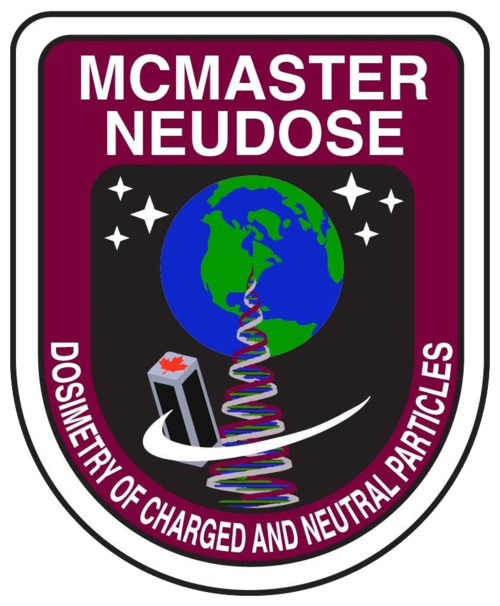NEUDOSE has been using the Mantis Elite-Cam stereo microscope donated by Vision Engineering to inspect circuit boards and small satellite components. To learn more about this collaboration, check out this article!
Silicon Photomultiplier Readout Boards
When radiation interacts with the Anti-Coincidence Detector (ACD) onboard the NEUDOSE satellite, light is emitted. Silicon Photomultipliers (SiPMs) amplify this light and turn it into an electrical signal for processing. Shown above are different SiPM readout board designs that will be used for testing purposes.
TEPC Molds
The Tissue Equivalent Proportional Counter (TEPC) is a major component of the on board radiation detector. A tissue equivalent plastic, that responds to radiation in the same manner as human tissue, will be compressed by these two molds to form the spherical detector. Compression molding was determined to be the optimal technique for fabricating the TEPC and both the female and male molds were designed by Luis, an Automotive & Vehicle Technology student.
Radiation Detector Pressure Vessel
This is the pressure vessel that encloses NEUDOSE's Tissue Equivalent Proportional Counter (TEPC), a major component of our on-board radiation detector. In order for the TEPC to appropriately measure the response of human tissue from radiation dose, the pressure must be controlled. This aluminum capsule maintains the pressure of the propane gas filled TEPC between 20-30 Torr for the duration of the entire mission.
Simulating Satellite Behaviour
Orbital analysis of the NEUDOSE satellite will be performed using a program called Systems Tool Kit (STK). This analysis will simulate different behaviors of the satellite including tumbling, access time from Earth, altitude, number of passes through the South Atlantic Anomaly (SAA), and sun exposure for battery charging.
3D Printed Model of the NEUDOSE Satellite
These are 3D printed models of the design of the NEUDOSE CubeSat. The top image depicts the sun facing side of the satellite. This side contains the deployable solar panels. Each solar panel contains six solar cells which convert energy from the sun into usable electrical energy. The bottom image shows the opposite side of the satellite.
Electronics Hardware Review
John, an electrical engineering student, and Akiv, an electrical & biomedical engineering student, presented to the team their final design of all of the hardware components and connections of the command and data handling subsystem. This preliminary design review involved discussion of topics such as JTAG for programming, FPGAs, microprocessor design, optimal RAM, and NAND flash. After successfully completing the preliminary design review, the command and data handling subsystem is ready to begin building and testing their schematic!
Plastic Scintillator
The outer layer of NEUDOSE's Charged & Neutral Particle Tissue Equivalent Proportional Counter (CNP-TEPC), our unique radiation detector, is made from a plastic scintillator material. The plastic scintillator is shown in blue on the accompanying image. When charged particles in space interact with this hemispherical detector, light is emitted. By collecting this light, it is possible to determine that the radiation passing through the detector is a charge carrier. This is the first step in how our novel CNP-TEPC can distinguish charged particles from neutral radiation.
3D Renderings of Deployable Solar Panels
Here are 3 dimensional renders of the front (top) and back (bottom) sides of a single deployable solar panel that will be attached to the CubeSat. This is one of the four solar panels that will be on the satellite. It features a Printed Circuit Board (PCB) mounted with 8 solar cells that are joined in a series configuration, and will be connected to the electrical power system module. Special consideration has been made to manage the panel temperature; hence the exposed copper zones shown on the back of the solar panel. Once deployed, the solar cells will be aimed in a sun-pointing mode to maximize power production in order to supply power to all the other subsystems in the satellite.
We Can See the Light!
Alex, a physics student, is currently testing the Silicon Photomultipliers (SiPMs) that will be utilized in our anti-coincidence radiation detector. When radiation interacts with the anti-coincidence detector, photons will be produced. SiPMs turn these photons into an electrical signal that can be processed to learn valuable information about radiation in space. Alex spent an afternoon testing the new SiPM components for proper functionality.














